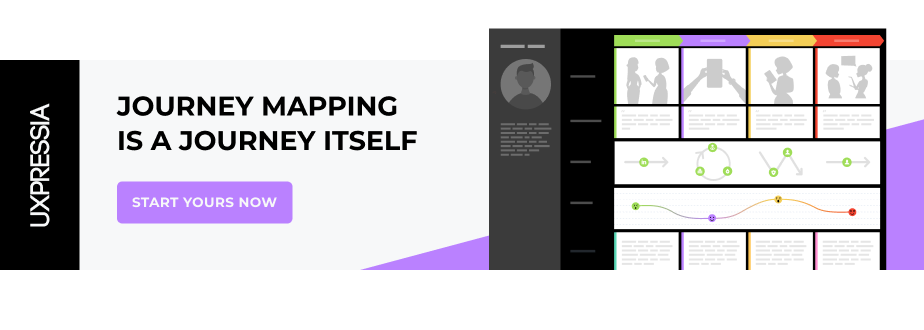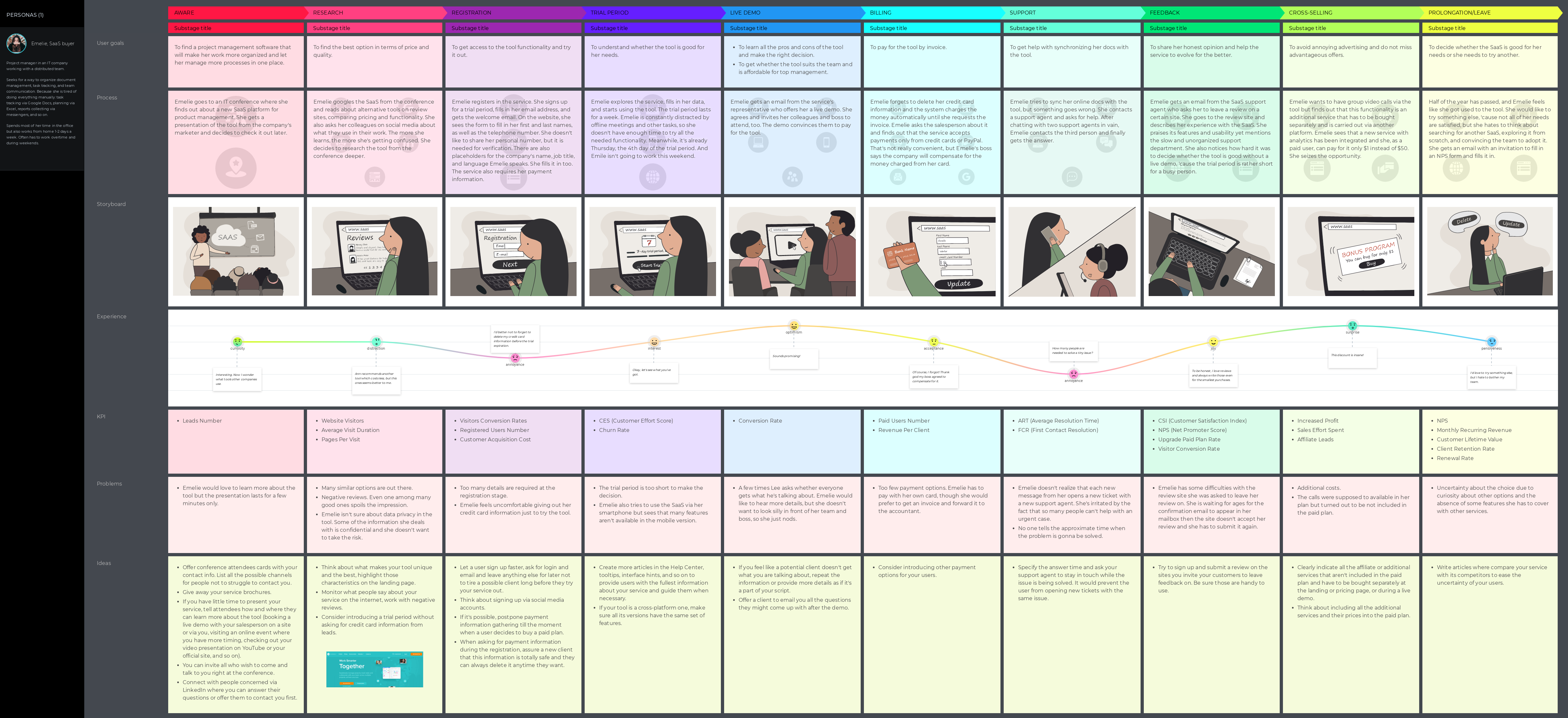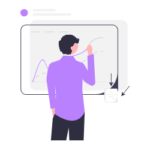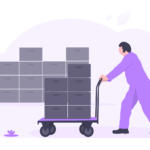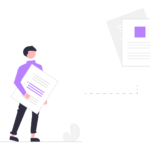What makes a user choose one SaaS product over another? And how do businesses keep them engaged once they start using it? These are the key challenges the SaaS customer journey can help to solve.
In this article, we'll define a SaaS customer journey, explain why visualizing it is essential, and how to do it effectively. We’ll also delve into the specifics of the B2B SaaS customer journey. Using real-world examples, we'll explore how companies can navigate such journeys, improve strategies, and build stronger customer loyalty—ultimately driving growth and satisfaction.
Ready?
Contents
SaaS customer journey: definition
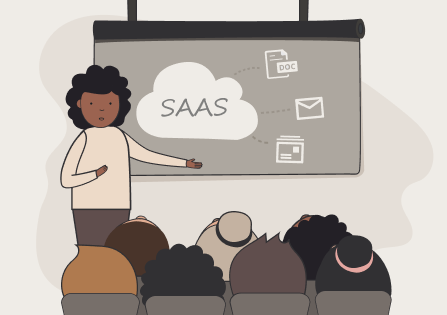
A SaaS customer journey is a user's complete experience with a SaaS product, from discovering it to becoming a loyal, recurring user or the one who quit. It covers every point of interaction between the customer and the SaaS provider, helping businesses better understand user behavior, expectations, and their needs at each stage. For example, a mid-sized company is looking for a scalable cloud storage solution. They attend a webinar hosted by a SaaS provider and later participate in a product demo. Hooked by the features, they sign up for a plan. The journey doesn't end there. The company's IT team collaborates with customer support during onboarding to ensure seamless integration. Over time, they receive helpful resources, from tutorials to personalized tips, guiding them to maximize the platform's potential.
For example, a mid-sized company is looking for a scalable cloud storage solution. They attend a webinar hosted by a SaaS provider and later participate in a product demo. Hooked by the features, they sign up for a plan. The journey doesn't end there. The company's IT team collaborates with customer support during onboarding to ensure seamless integration. Over time, they receive helpful resources, from tutorials to personalized tips, guiding them to maximize the platform's potential.
After the onboarding process, the company's IT team continues to explore the platform's more advanced features, with regular check-ins from customer success to ensure everything is running smoothly. As the company scales, it integrates additional services and expands its usage. Near the renewal phase, they receive a usage summary and insights into how they could further optimize their experience. This proactive engagement not only reinforces the platform's value but encourages the company to upgrade its plan and expand into other departments, ensuring long-term retention and growth.
To visualize a customer journey, we are going to build a customer journey map, as a well-mapped journey can completely transform how companies engage with their users. It does this by identifying key touchpoints, revealing pain points, and helping businesses tailor their interactions to meet customer needs more effectively.
A detailed map allows companies to anticipate issues before they arise, create personalized experiences, and deliver targeted solutions at the right moment—whether it's improving onboarding, providing timely support, or encouraging deeper product adoption. This results in higher engagement, customer satisfaction, and long-term retention.
SaaS customer journey stages
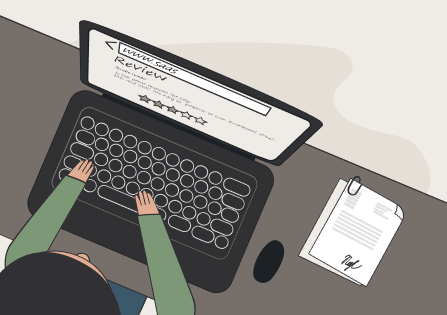
Think of the SaaS customer journey as a roadmap outlining the different stages users go through when interacting with a SaaS product—from first hearing about it to becoming loyal, long-term customers.
A customer journey map for SaaS serves as a tool to visualize these stages, allowing businesses to refine interactions, improve user engagement, and boost conversion and retention rates. While the specific stages may vary depending on the product or audience, there’s a general structure that applies in most cases. Here's the outline of this structure:
- Awareness
This is when users learn about the product through marketing campaigns, social media, or word of mouth. At this point, the goal is to showcase the product's value proposition and grab attention. Whether through blogs, paid ads, or content marketing, it's all about making a solid first impression.
- Consideration
In this phase, potential users are weighing their options. They explore product features, read reviews, watch demos, or try free trials.
- Trial/Buying decision
This stage marks the tipping point in the SaaS customer journey, where potential users either commit to the product or walk away. Here, users are actively evaluate the product’s value, usability, and overall fit for their needs based on their trial experience or interactions with the sales team.
- Onboarding
Users need an intuitive onboarding process to get up to speed quickly. Tutorials, user guides, and proactive support ensure new customers can easily navigate and start using the product effectively. First impressions here can cement long-term success.
- Adoption
Now that the user knows the basics, the focus shifts to deepening engagement. Regular product use is encouraged by providing insights into advanced features, ongoing support, and tips. This stage solidifies user satisfaction and strengthens the customer’s connection to the product.
- Renewal/Expansion
The final stage revolves around whether the user renews their subscription or scales up. If the product continues to deliver value, users are likely to renew and may even upgrade their plans or expand usage within their organization.
How to build a SaaS customer journey map
Building a SaaS customer journey map is about more than just listing stages—it's about making each interaction count.
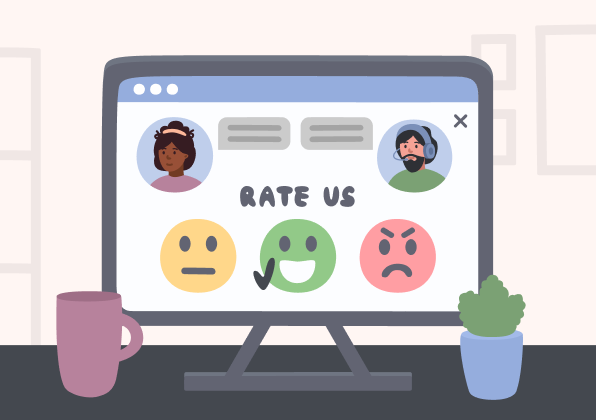
A well-crafted map is the key. Let’s create a basic yet effective structure for your SaaS customer journey map together.
To start, you'll need to research and gather data on your current SaaS customer experience. The best sources of this information are your clients and the employees who interact with them regularly. You can collect this data through customer surveys, interviews, and feedback forms to understand their pain points and expectations. Internally, consult your customer support and sales teams for insights on common issues, user behavior, and recurring feedback. Tools like NPS, customer satisfaction surveys, and support ticket analysis can provide valuable, actionable insights for improving the customer journey.
Next, you need to define the goals of your journey map, as these will determine the scope of the journey. Perhaps you're focused on the detailed onboarding process, so you'd map out smaller steps within that stage. Or, you might want to analyze the entire end-to-end journey to identify where churn occurs.
Once you've identified the stages for your map, you can move on to the sections. These sections form the core content of each stage, revealing different aspects of the customer experience. You could include elements such as:
- Actions
For each stage of the journey, list the specific actions users take. Are they browsing your website, signing up for a free trial, or diving into product features? Knowing exactly what users are doing helps you fine-tune their experience. These actions give clues as to where users might face friction or drop-off points, enabling you to be proactive.
- User expectations & needs
Map out the expectations users bring at every step. For example, during onboarding, a user might expect a smooth setup process, with clear instructions. In the adoption stage, they might want to learn about advanced features. Listing these expectations helps you make sure your product meets or exceeds them.
- Channels
Identify the platforms or devices users engage with—desktop, mobile, tablet, or a combination. Is their experience seamless across platforms? Are they contacting support via chat, email, or phone? Mapping out all the ways they interact with your product helps ensure consistency and usability.
- Pain points & solutions
Don’t shy away from detailing where users run into trouble. This section highlights problems they face at each stage, whether it's confusion during onboarding or difficulty finding support. Next to each pain point, offer a clear solution. This helps your teams understand what to fix to improve the user experience.
- User quotes
Adding user quotes brings a personal and realistic feel to the map. Whether from surveys, feedback, or customer success interactions, including authentic voices helps you understand how users truly feel at each stage. These quotes can also highlight specific frustrations or positive feedback that can guide your roadmap.
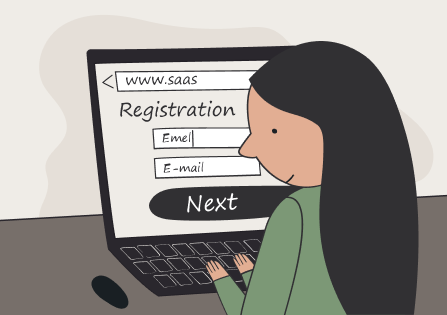
- Statistics
In B2B, for instance, tracking and leveraging relevant statistics can provide powerful insights to refine the customer journey. Adding industry reports, benchmarks, and other relevant data to your journey map helps contextualize each stage, whether understanding which markets or company sizes are most likely to convert or tracking key performance indicators like Net Promoter Score (NPS). For example, knowing which regions or industries are adopting your product more rapidly can help tailor your strategy to target similar markets.
Trick: Include industry-specific statistics from reports, such as market share or buyer demographics, to align your journey map with real-world trends. Use NPS or similar metrics to gauge customer satisfaction and pinpoint areas needing improvement.
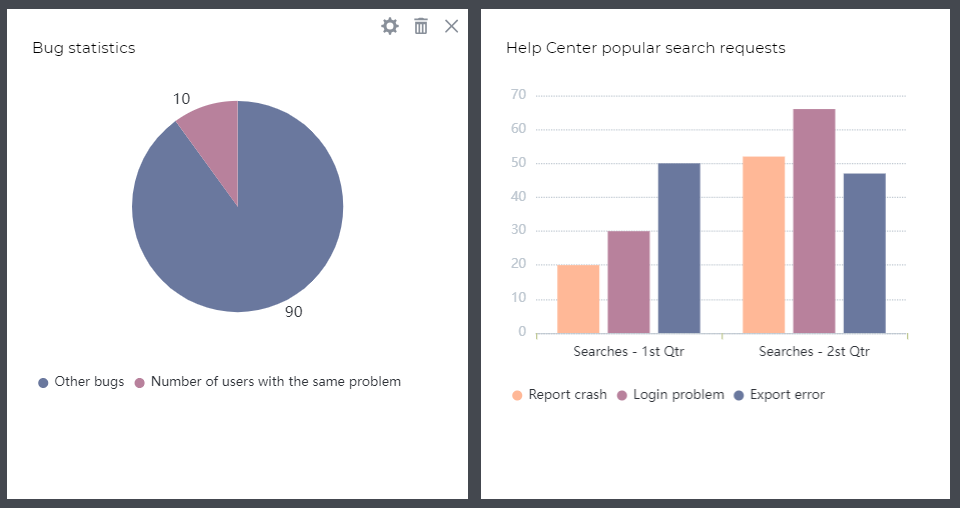
- Experience graph
Here’s where you get into the emotional side of the journey. An experience graph shows the highs and lows of user emotions across the entire process, from the excitement of discovery to potential frustration in onboarding. Plot these emotions on a graph for each stage. It’s a simple way to visualize how smooth (or rocky) the experience is, giving teams a quick glance at where improvements are needed.
Trick: Use icons to represent emotions on your experience graph. With a single look, you can easily identify where your journey is working well and where it needs attention.
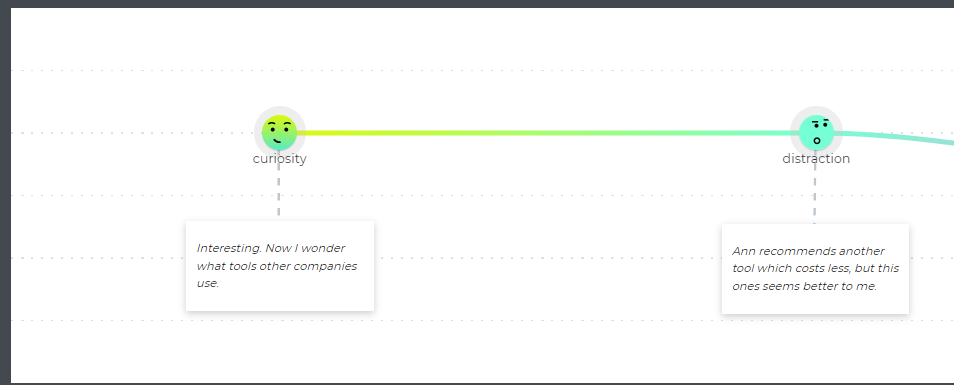
Interface screenshots
Include relevant screenshots of your product interface for each step of the journey. This is a quick and effective way to make the map more visual and actionable for your team. Seeing what users see helps everyone, from marketing to product design, identify where improvements can be made.
After all your efforts, you’ll have a living and breathing artifact—a source of inspiration, insights, and the foundation for strategic planning. For example, here’s a SaaS buyer journey map built in UXPressia:
It’s clear, visual, and easy to use.
Pro tip: Your customer journey isn’t set in stone. As your product evolves and user needs change, so should your journey map. Continuously gather feedback and use data to make improvements.
Trick: A/B test different touchpoints by changing the flow of your onboarding process, adjusting your pricing model, tweaking in-app messaging, etc. Small changes can make a big difference.
Life-based SaaS customer journey examples
Here are a few real-world SaaS customer journey examples to show how companies guide users from initial interest to long-term loyalty.
- Slack has a strong focus on user onboarding. When potential users sign up, Slack immediately introduces them to the product’s core features through interactive tutorials and tooltips that guide them step-by-step.
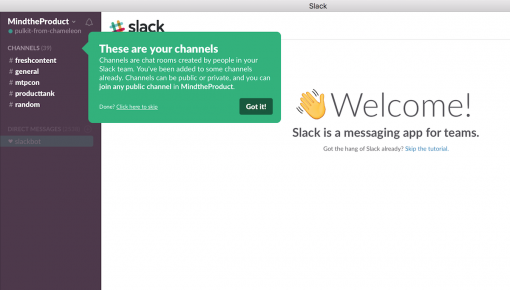
They also offer a free trial, allowing users to experience the product's full functionality before committing to a paid plan. Slack emphasizes seamless integration and continuous engagement, with regular updates, new feature releases, and targeted emails designed to deepen user adoption and retention.
- Dropbox is another excellent example of a well-structured SaaS user journey. New users are guided through a simple and intuitive onboarding process. Dropbox uses gamification techniques, rewarding users with additional storage when they complete tasks like downloading the app on different devices or referring friends.
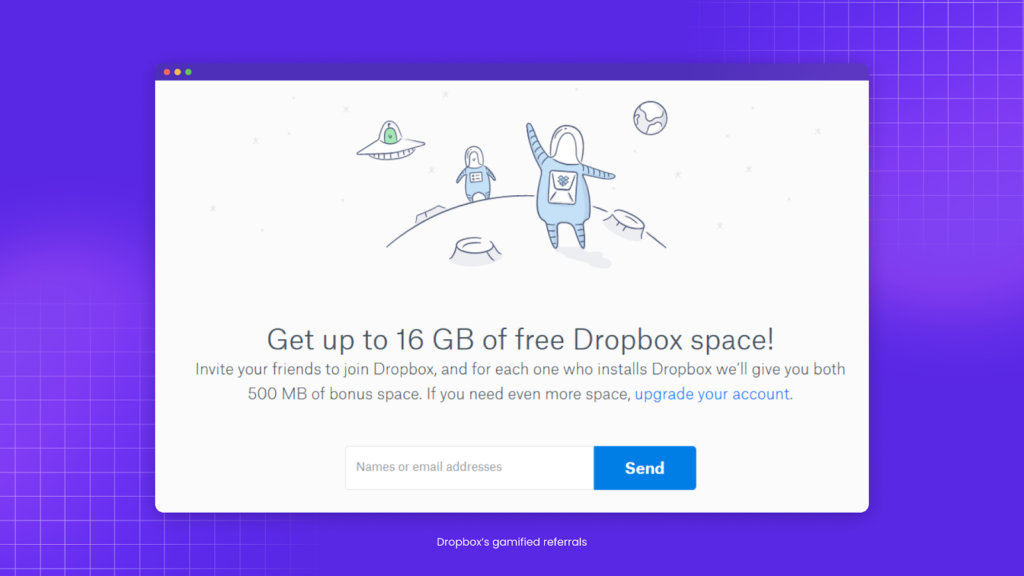
The focus on ease of use helps retain users during the critical early stages of adoption. At the same time, their SaaS customer journey map may highlight Dropbox’s emphasis on converting free users to paid plans through storage limitations and upsell offers when they reach their storage cap.
- HubSpot’s journey starts with offering users free tools like CRM software, encouraging businesses to try the platform. HubSpot’s onboarding process includes helpful content like blogs, webinars, and tutorials to guide users on how to make the most of the platform.
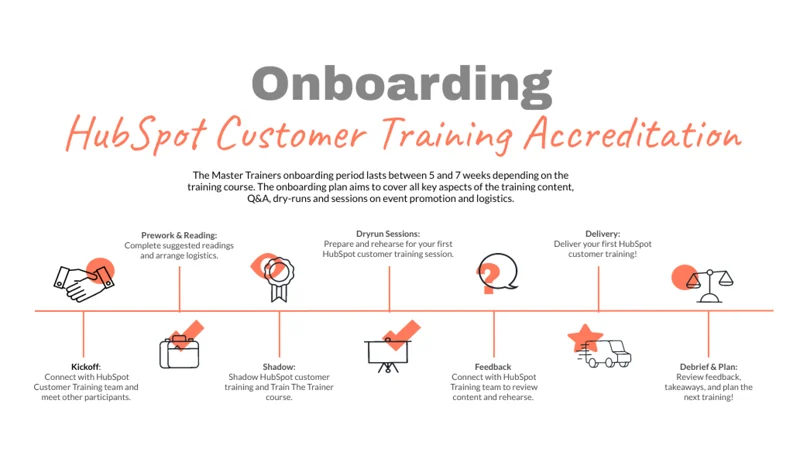
The SaaS customer journey stages are marked by automated emails, personalized recommendations, and tailored success stories, all aimed at nurturing the user into adopting higher-tier paid services.
The B2B SaaS customer journey: what’s different?
The B2B SaaS customer journey has several unique features distinguishing it from a B2C SaaS experience. Understanding these differences is crucial for creating actionable SaaS customer journey maps that align with business goals.
Longer sales cycle
AB2B sales cycle is often significantly longer, requiring more time to move from awareness to purchase. This is due to multiple decision-makers, internal discussions, and budget approvals. For instance, when considering enterprise-level SaaS products like Salesforce or HubSpot, a company may take weeks or even months to evaluate the product before committing.
The complexity of this process makes it essential to map interactions over time, ensuring each key moment—demos, follow-ups, trials—are tracked for optimal engagement.
Dealing with multiple decision-makers
In a B2B context, decisions are rarely made by one person. Instead, multiple stakeholders (e.g., IT managers, financial officers, and department heads) must align on the purchase. When it comes to working with enterprise customers, Dropbox expanded into enterprise services, accounting for the needs of different departments, including legal and procurement.
That means your B2B journey map should outline interactions with each type of decision-maker and provide materials catered to their needs, such as detailed product specs for IT and ROI analyses for financial teams.
Procurement and negotiations as stages
B2B SaaS deals typically include formal procurement processes and contract negotiations, which differ from the more straightforward purchases seen in B2C. Businesses review legal aspects, pricing models, and service agreements during these stages in detail.
Your B2B SaaS customer journey map should include these phases, emphasizing touchpoints like procurement approvals and compliance documentation. Understanding this complexity helps smooth the process and allows sales teams to offer resources that address concerns proactively.
Tailored onboarding and support

Onboarding in a B2B SaaS environment often involves entire teams or departments, not just individual users. Products like Slack, for example, provide in-depth onboarding with custom training sessions to help businesses integrate the platform seamlessly into their workflows.
Your journey map should reflect the onboarding process, showing the interaction between your customer success team and various business departments. You’ll need to track ongoing support interactions and usage metrics to ensure successful product adoption across the entire organization.
Retention focused on value delivery
While the renewal stage is important in B2C, it becomes even more critical in B2B, where renewals often depend on the perceived value delivered over time. Asana and Monday.com help large teams achieve measurable results throughout the SaaS user journey by offering real-time dashboards, task automation, and detailed reporting.
Their platforms track progress on tasks and goals, provide actionable insights with customizable reports, and streamline workflows with automation, all while enhancing team collaboration through shared workspaces and communication tools. This ensures teams can continuously measure and improve productivity and project outcomes.
Measurement of CX metrics such as engagement and product utilization is important to maintain customer satisfaction. Building feedback loops into your journey map—via NPS scores or regular customer check-ins—ensures you are actively addressing user concerns before renewal discussions arise.
Mapping the B2B SaaS customer journey, be sure to focus on specific points like legal reviews, customized onboarding, and continuous support. Since B2B sales cycles are longer and involve multiple decision-makers, the journey map needs to address these complexities. By considering these factors and focusing on delivering value over time, businesses can create a detailed and effective journey map that aligns with the needs of B2B clients.
Wrapping Up
Mapping a SaaS customer journey can aid you in delivering a smooth, value-driven user experience. Businesses can fine-tune their strategies to better meet customer needs, boost engagement, and drive long-term retention by identifying key touchpoints like discovery, onboarding, and renewal.
Whether you're working in a B2C or B2B space, a journey map gives you the visibility needed to track every interaction, anticipate challenges, and ensure each phase provides maximum value. For B2B SaaS, things get more complex with longer sales cycles, multiple decision-makers, and stages, like procurement and contract negotiations. A well-crafted journey map helps simplify these complexities, leading to higher customer satisfaction and loyalty.
In short, building a SaaS customer journey map isn't just about improving user interactions—it's about fostering long-term relationships and crafting a seamless, engaging experience that fuels business growth.
Key points
- The full experience users go through when interacting with a SaaS product, from discovery to long-term engagement.
- Mapping a customer journey helps optimize interactions at each stage, improves satisfaction, and reduces churn.
- Key stages include Awareness, Consideration, Decision, Onboarding, Adoption, and Renewal/Expansion, with specific focus points for each.
- The B2B SaaS journey is more complex, involving longer sales cycles, multiple decision-makers, procurement, and detailed onboarding processes.
- Customization and personalization at every stage of the journey are crucial, especially for B2B, where various departments interact with the product.
- Use data analytics, customer feedback, and CX metrics to regularly update and improve the journey map, ensuring user satisfaction and business growth.
